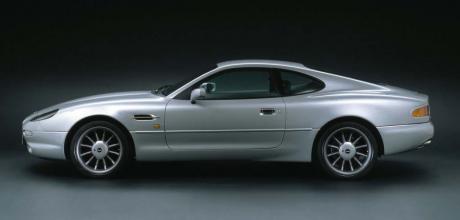Market trends - Aston Martin DB7
The entry-level Aston remains an affordable prospect. Just try to ignore the Escort bits.
The DB7 and the old question – “Should I or shouldn’t I?” – is a conundrum faced by many a motoring enthusiast swooning over those sleek lines and the badge cachet with its illustrious heritage. But, fundamentally is it a good buy? This is a simple enough question without a simple answer – every car is a little different and will have responded differently depending how it was built and how it’s been used and looked after in the intervening 26 years since the first six-cylinder cars rolled off the production line.
As a result, the car has always had a mixed reception by the motoring enthusiast and used car market. A bit too ‘Jag’ for some, a bit too slow, a bit too ‘bitsa’ with its MX-5 door handles and obvious Ford parts bin switchgear.
Is this why it’s never really gained any serious traction in the used sports car market? It’s undoubtedly a pretty shape and one that’s aged arguably well perhaps unlike some of its period brethren – is it simply some clever badge engineering?
A good usable, sub-100k example can be had for early mid-teens, and a good lower mileage example can also be had for, er, mid to late teens. Of course, there are the exceptions, with dealers optimistically punting low mileage cars for more because of this or that or a celebrity owner here or there that’s frankly irrelevant which conversely can provide a warm feeling of ‘ambition met’.
A well-used example is probably a better bet, with a good independent specialist service history suggesting it’s likely to have been better serviced, more frequently with some of the common foibles ironed out and corrected: think window seals, wandering steering, imbalanced brakes, subframe rot for starters.
A manual car is a sportier and arguably faster, more engaging drive and as such more appealing in an increasingly less analogue world, particularly when coupled with a sports exhaust which helps release a little more bark from the rather muted stock system which gave little aural drama, V12 aside.
What should you buy and how much should you pay? £15,000-£20,000 should buy you as good an example as you’d hope – but at the higher remit you’re knocking on the door of the much improved V12 Vantage version with more power and £17-25k should buy you all the Vantage you’ll likely need. It’ll likely be a good and usable car if the coils hold out and the rear subframe hasn’t rotted or the footwells leaked. Look a little wider, and you’ll find a tidy, maybe higher mileage V8 Vantage which is most certainly a ‘proper’ Aston with the right DNA.
Brightwells recently sold a nice i6 that had covered 101,000 miles with good history, and despite the hole in the sill that both AM and the MoT stations seemed to pretend wasn’t there, the car still managed a respectable £16,409 with premium (before VAT), ahead of its £13k lower estimate.
That said, looking at the graphs for both cars of values since 2014 to the current, the values have remained pretty stable over the last six years, neither rising or falling much when compared to the Porsche 993 series 911, the Ferrari 355 or Bentley Continental of the same period.
Six-cylinder DB7s remain affordable. Buy on history and don’t be scared by miles.
Budget on £15,000-£20,000 for a nice example of the Jaguar-engined car.


